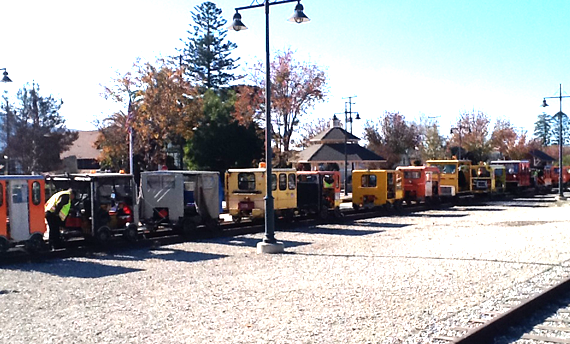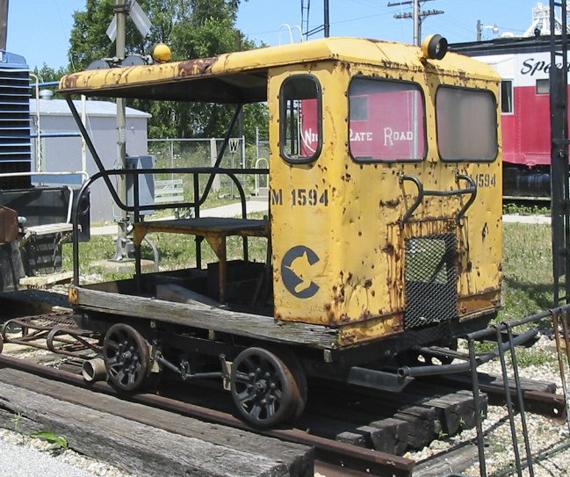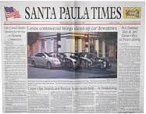
|
More than 30 motor cars holding members of Motor Car Operators West (MOW) visited Santa Paula’s historic Depot Saturday and Sunday riding in on their assorted “Speeders” that are restored by hobbyists for travels far and wide. |
Motor Car Operators West pulls into the
Depot for weekend excursion
January 07, 2015
By Peggy Kelly
Santa Paula News
Even the most blasé of local onlookers used to the dazzling array of Fillmore & Western Railroad engines and cars was impressed, albeit on a smaller scale when dozens of members of Motor Car Operators West (MOW) pulled in at the Depot Saturday and Sunday.
The group is part of the North American Railcar Operators Association, a non-profit organization dedicated to the preservation and safe, legal operation of railroad equipment historically used for maintenance of way. NARCOA has over 1,800 members worldwide including MOW; the national organization licenses the drivers and insures the vehicles.
Ken Creasey of Vancouver, BC, has been an active fan of the tiny rail cars for about a dozen years that he said are purchased, restored and operated by retired railroad personnel and other hobbyists.
Creasey is an overall railroad enthusiast and a self-described “snowbird” who combines his love of trains with warmer weather by spending summers as a volunteer docent at the Orange Empire Railroad Museum in Perris.
He noted people can find excursions planned for the rail motor cars, originally used for everything from firefighting to rail checks and maintenance teams, all year round, “Sometimes two- to three-week trips... “
Northern California and Oregon are popular MOW locations - railroad time is rented in each area - as are those that Creasey said wind through mountainous areas.
MOW visitors had lunch at the Ventura County Agriculture Museum, a bonus side-trip that members find on each outing when exploring historic depots and small towns, quaint trestles and local attractions, all part of the fun.
Billed as a “spectacular two-day excursion” MOW members spent much of Saturday morning motoring through the Santa Clara River Valley along the Santa Paula Branch Line tracts. They traveled east in the morning to Piru and once they reached the end-of-track they turned and traveled west to Santa Paula.
After the lunch break the travelers continued west as far as time allowed before returning to Fillmore by the late afternoon. The MOW goal for the excursion was to travel a total of 45 or 50 miles each day through the fields and orchards the river valley is famous for.
Some MOW members stay in local hotels while others pull their rail cars, known as Speeders, behind RVs.
“These are cool,” said Chris Wilson of Santa Paula who pulled into the parking lot off Railroad Avenue to enjoy the more than 30 motor cars that were on the jaunt.
“I saw these once on Huell Howser... he called them Speeders,” noted Wilson, who admitted to pulling over when he realized what the procession of small motor cars were.
Also known as a putt-putt, track-maintenance car, crew car, jigger, trike, quad, trolley or inspection car, and although slow compared to a train or car, the vehicles are called “Speeders” because they are faster than a human-power vehicle, the “hand-cars” of railroading used more than 100 years ago.
Motorized inspection cars first started to appear in the 1890s when it was reported that the U.S. Daimler Motor Company created a gasoline powered rail inspection car capable of 15 mph.
Some things don’t change: according to Creasey, MOW members traveled at about 15 mph between Santa Paula and Fillmore, a pace they pretty much keep to no matter where they roll.

|
MOW members traveled at about 15 mph between Santa Paula and Fillmore, a pace they pretty much keep to no matter where they roll. |




